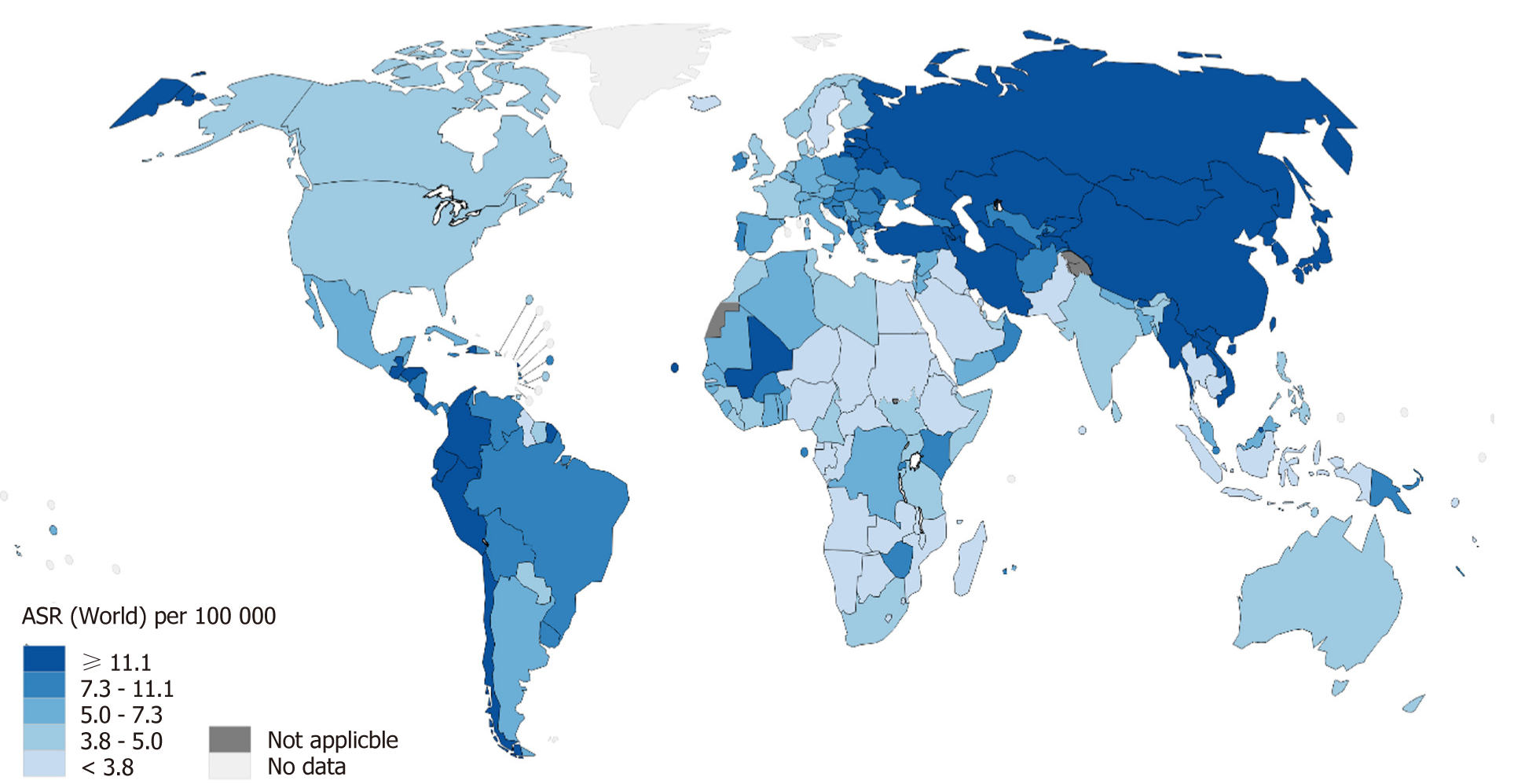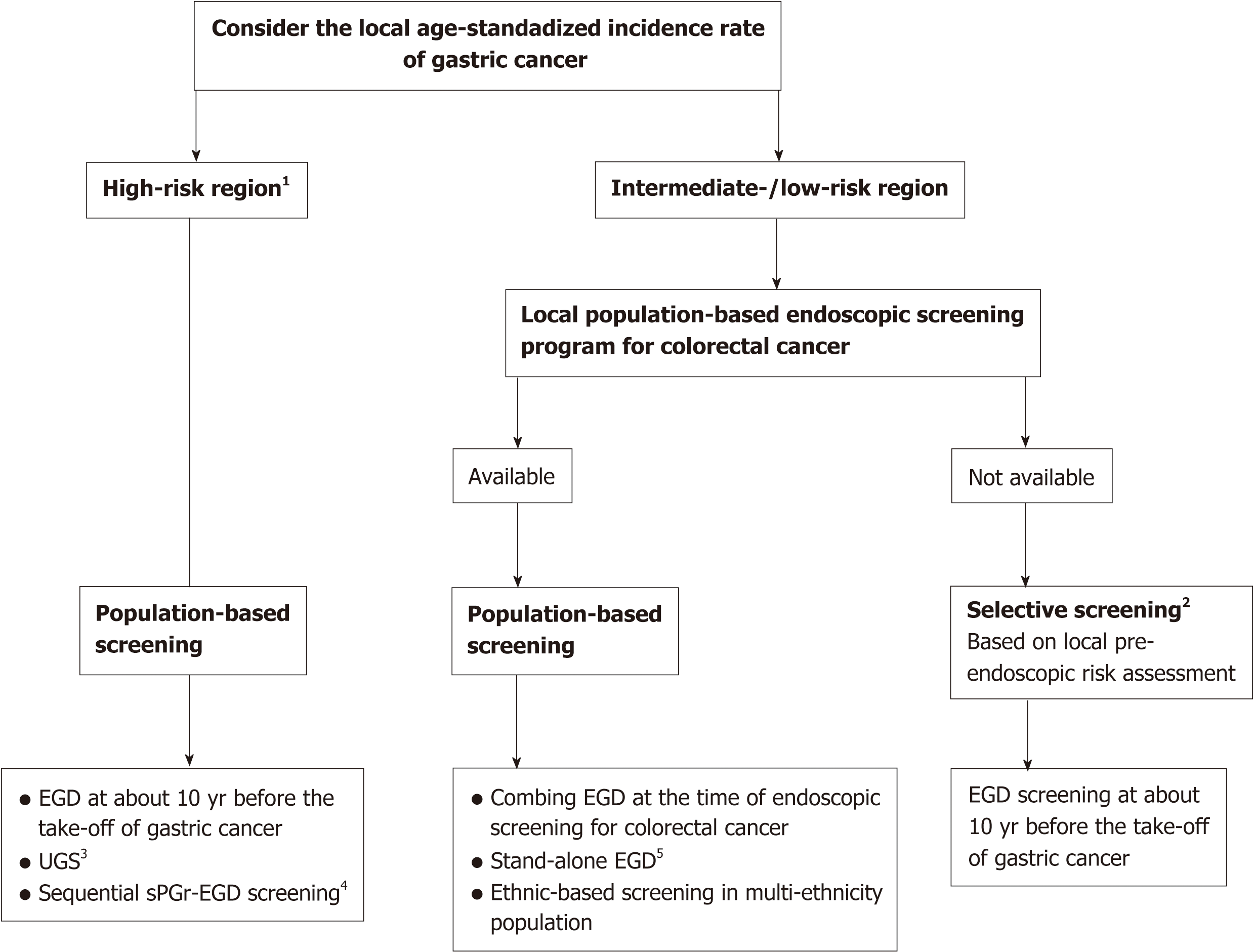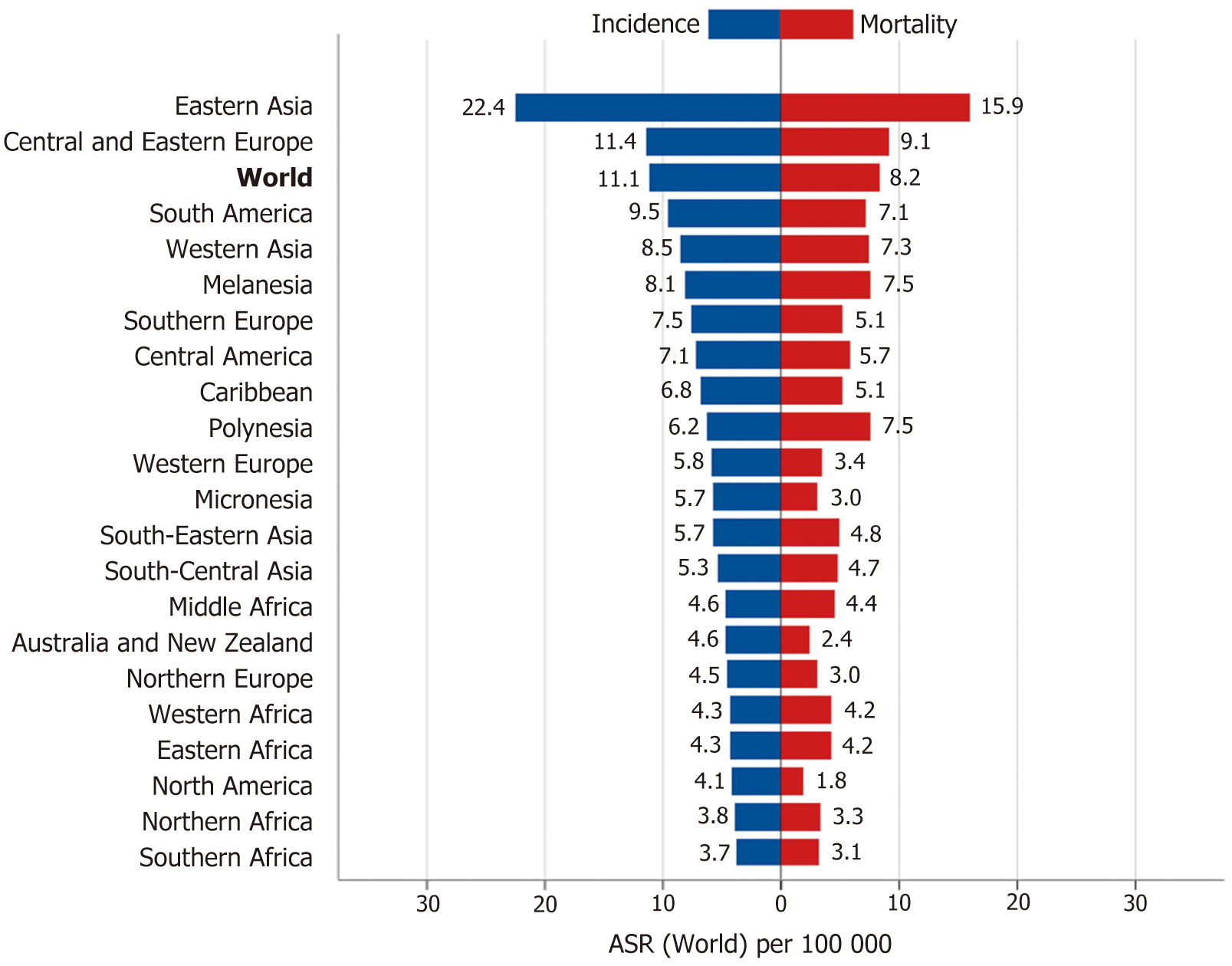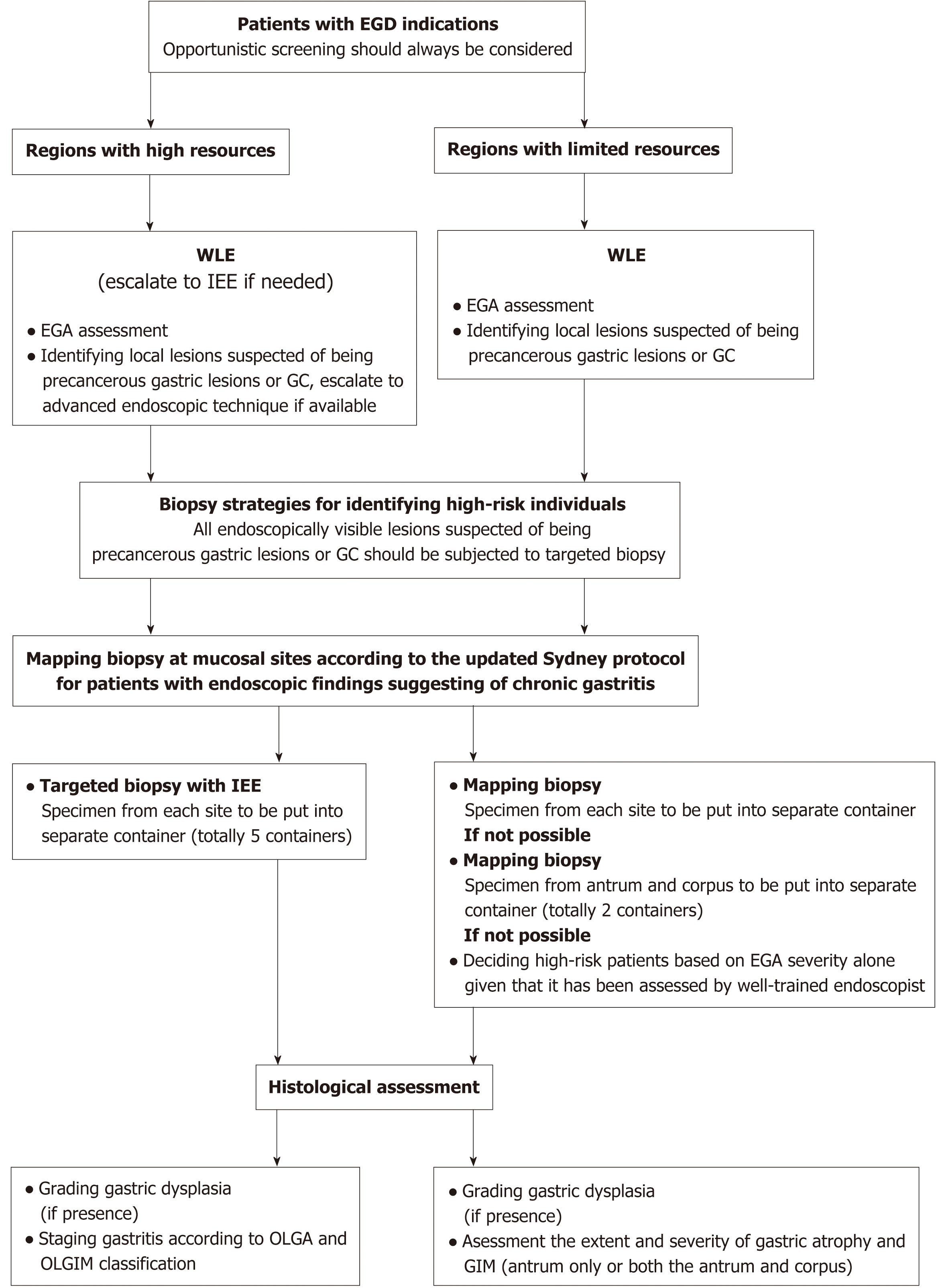Copyright
©The Author(s) 2019.
World J Gastroenterol. Jul 21, 2019; 25(27): 3546-3562
Published online Jul 21, 2019. doi: 10.3748/wjg.v25.i27.3546
Published online Jul 21, 2019. doi: 10.3748/wjg.v25.i27.3546
Figure 1 The estimated age-standardized incidence rate for gastric cancer in 2018 (both sexes, all ages)[1].
Figure 2 Possibly cost-effective approaches for identifying asymptomatic individuals with a high risk of gastric cancer development.
1The age-standardized incidence rate is greater than 20 per 100000. 2Applying selective screening for subjects with high-risk pre-endoscopic features. 3Not yet shown to reduce gastric cancer mortality. 4The performance of serum PG I/II ratio should be locally validated. 5Cost-effectiveness should be considered based on the local age-standardized incidence and the cost of esophagogastroduodenoscopy. In multi-ethnic populations, ethnicity-based screening for high-risk ethnic groups should be considered. EGD: Esophagogastroduodenoscopy; UGS: Upper gastrointestinal series; sPGr: Serum PG I/II ratio.
Figure 4 Resource-sensitive approaches to identifying high-risk patients who undergo esophagogastroduodenoscopy for any reason.
WLE: White-light endoscopy; EGA: Endoscopic gastric atrophy; GC: Gastric cancer; IEE: Image-enhanced endoscopy.
- Citation: Quach DT, Hiyama T, Gotoda T. Identifying high-risk individuals for gastric cancer surveillance from western and eastern perspectives: Lessons to learn and possibility to develop an integrated approach for daily practice. World J Gastroenterol 2019; 25(27): 3546-3562
- URL: https://www.wjgnet.com/1007-9327/full/v25/i27/3546.htm
- DOI: https://dx.doi.org/10.3748/wjg.v25.i27.3546












